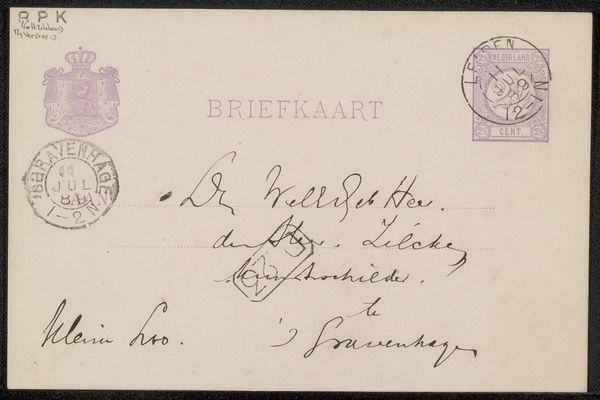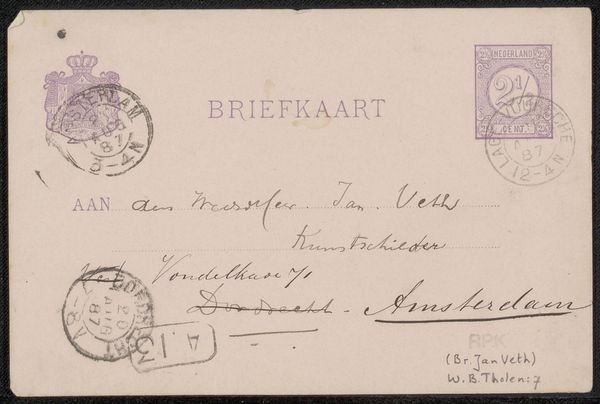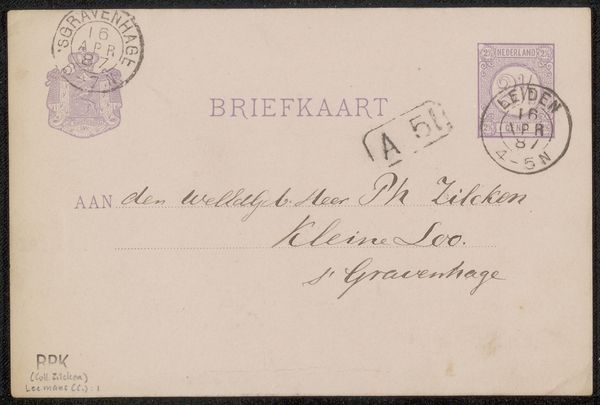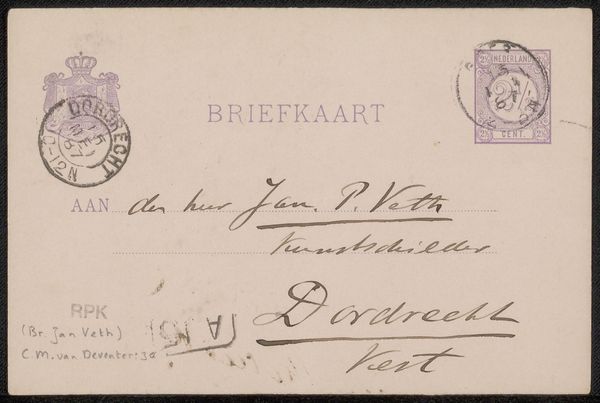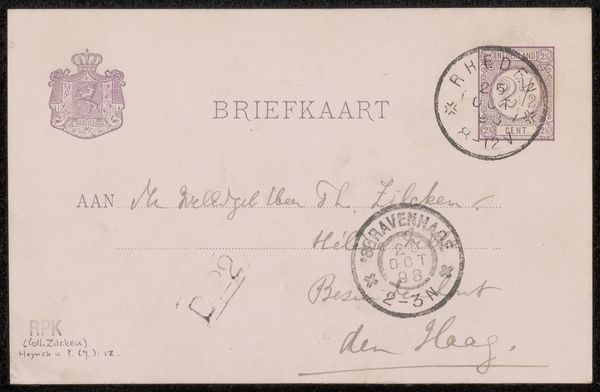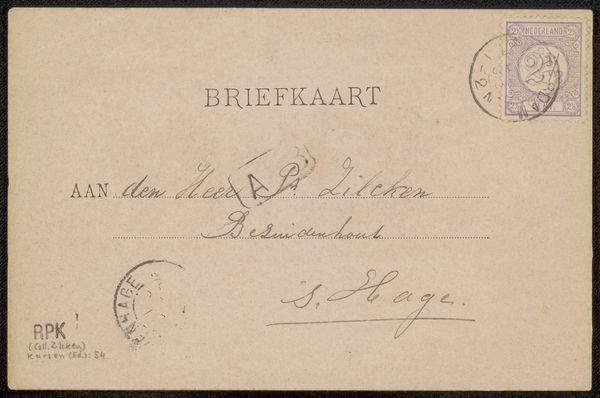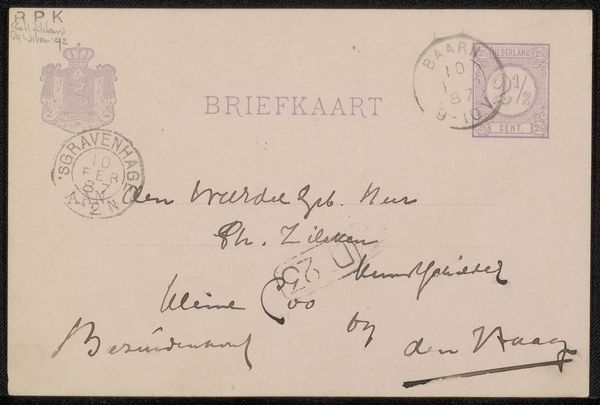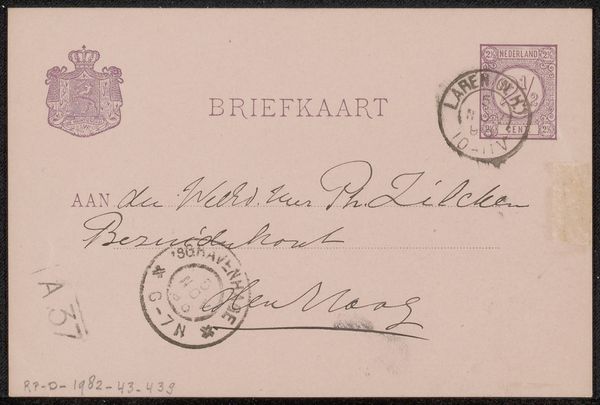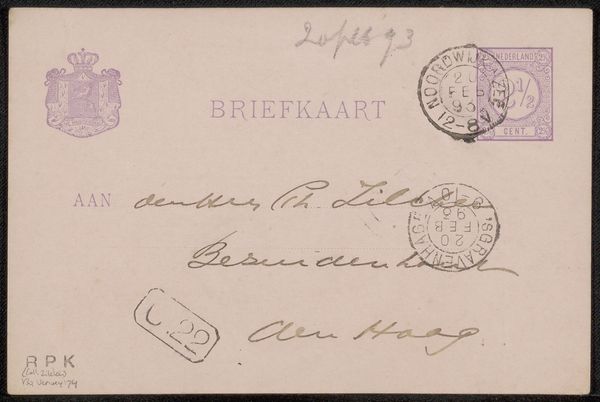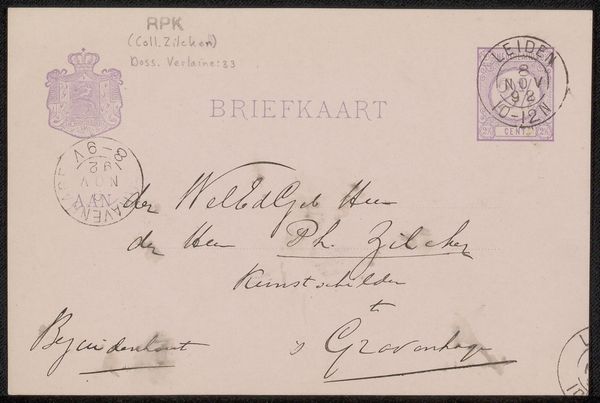
drawing, ink, pen
#
drawing
#
hand-lettering
#
old engraving style
#
hand drawn type
#
personal sketchbook
#
ink
#
hand-drawn typeface
#
ink drawing experimentation
#
pen-ink sketch
#
pen work
#
sketchbook drawing
#
pen
#
sketchbook art
#
calligraphy
Copyright: Rijks Museum: Open Domain
Curator: Let's turn our attention to this delicate piece: Wally Moes’ "Briefkaart aan Jan Veth," created before 1887 using pen and ink. It provides a fascinating glimpse into the social networks of the late 19th century. Editor: My first impression is the directness and the utility of the work. It seems so basic and almost transactional, despite the care put into the hand-lettering and seals. Curator: Precisely. This wasn't merely a functional object; the act of carefully inscribing it elevates it. Consider the context: the burgeoning postal system, connecting artists and intellectuals like Moes and Veth. The card represents a material connection in a world increasingly mediated by technology. Editor: And look at the physical stamps and markings. They're not just incidental, they are embedded into the structure and convey postal labor and systems in motion, which gives this “birefkaart” social value. Curator: The penmanship itself can be viewed as a form of portraiture, reflecting the personality and education of the sender. Each flourish tells a story. Moreover, the domestic sphere of correspondence provided space for female artists like Moes to cultivate professional relationships within a patriarchal art world. Editor: Yes! And think about the type of ink. What sort of labour did it take to harvest and prepare? Its deep tone on this fragile card indicates preservation of this particular kind of material investment, since it would certainly stand out against cheaper dyes, etc. Curator: Ultimately, this simple postcard speaks volumes about the artistic and social landscapes of its time. It also begs questions about how these intimate transactions, even when replicated en masse, shape culture. Editor: I'm really considering now this artwork as part of the chain that helped make this social value possible. Curator: A humble medium, elevated by history and material circumstance. Editor: Right, by understanding materiality, in relationship to the political history we can discover social exchange from its making to its reception!
Comments
No comments
Be the first to comment and join the conversation on the ultimate creative platform.
